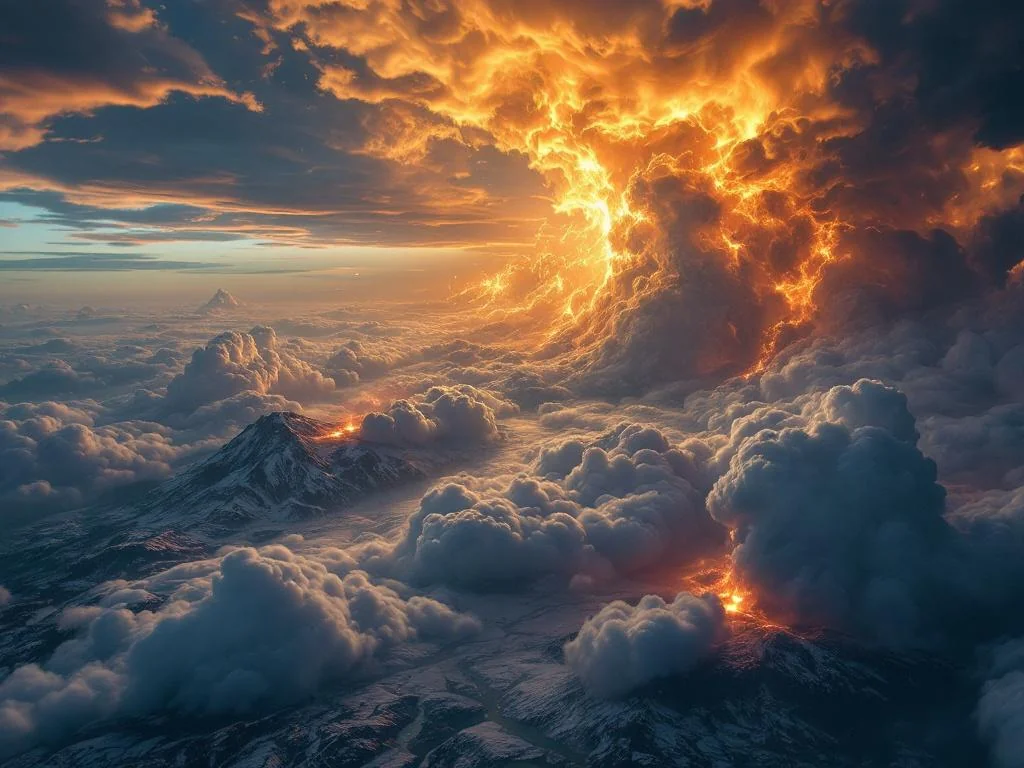Climate Geoengineering: A Radical but Risky Solution
Climate geoengineering, also known as climate engineering, encompasses a range of techniques aimed at manipulating and modifying the Earth’s climate and environment[3]. This approach mainly falls into two broad areas of activity: the removal of carbon dioxide (CO2) and the management of solar radiation[5].
Solar Radiation Management
One of the most discussed methods in the context of climate geoengineering is the injection of stratospheric aerosols. This technique involves spreading particles in the stratosphere to reflect a portion of the sun’s rays, thereby reducing the amount of heat that reaches the Earth’s surface. Another example is marine cloud brightening, which involves adding substances to increase cloud reflectivity and reduce heat absorption[4].
Massive CO2 Capture
CO2 capture is another major component of climate geoengineering. Methods include direct air capture technology, ocean fertilization to stimulate the growth of phytoplankton that absorb CO2, and macroalgae farming, which involves growing algae to use as fuel or to store to reduce CO2 emissions[5].
Risks and Uncertainties
Despite the hopes placed in these technologies, climate geoengineering presents many risks and uncertainties. Climate modeling is complex and prone to errors, making it difficult to predict the side effects of these large-scale interventions. For example, the injection of stratospheric aerosols could disrupt monsoon rains, thus affecting regions dependent on these rains for their agriculture[4].
Geopolitical Risks
The geopolitical implications of climate geoengineering are also significant. The decision to modify the global climate raises deep ethical questions: who has the right to make such decisions? Potential conflicts between nations over the use of these technologies could be major, especially if some regions benefit more than others from the effects of these interventions[5].
Technological Moral Hazard
Another crucial debate concerns the technological moral hazard. The implementation of geoengineering solutions could delay real transitions to renewable energies and sustainable practices, as people might feel less pressured to reduce their greenhouse gas emissions if a “techno-miracle solution” is in sight[2].
Traditional Mitigation and Adaptation Solutions
In comparison, traditional mitigation and adaptation solutions, such as transitioning to renewable energies, energy efficiency, and sustainable agricultural practices, offer more predictable and less risky results. These approaches not only reduce greenhouse gas emissions but also improve the resilience of ecosystems and communities to climate change.
Conclusion
Climate geoengineering, although it may offer radical solutions to combat global warming, is an approach heavily laden with risks and uncertainties. As research and experimentation continue, it is crucial to maintain a principle of caution and prioritize traditional mitigation and adaptation solutions, which are more reliable and sustainable. The fight against climate change requires a multidimensional and coordinated approach, where technology is used wisely and in complementarity with significant behavioral and political changes.
Sources
https://greenly.earth/blog/secteurs/tout-ce-que-vous-devez-savoir-sur-la-geo-…
https://youmatter.world/fr/definition/geo-ingenierie-definition-exemples-tech…
https://fr.wikipedia.org/wiki/G%C3%A9oing%C3%A9nierie
https://www.radiofrance.fr/franceculture/podcasts/un-monde-connecte/la-geo-in…
https://vitrinelinguistique.oqlf.gouv.qc.ca/fiche-gdt/fiche/26504637/geo-inge…
https://greenly.earth/blog/secteurs/tout-ce-que-vous-devez-savoir-sur-la-geo-…
https://youmatter.world/fr/definition/geo-ingenierie-definition-exemples-tech…
https://fr.wikipedia.org/wiki/G%C3%A9oing%C3%A9nierie
https://www.radiofrance.fr/franceculture/podcasts/un-monde-connecte/la-geo-in…
https://vitrinelinguistique.oqlf.gouv.qc.ca/fiche-gdt/fiche/26504637/geo-inge…



